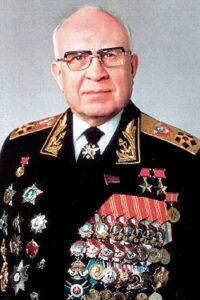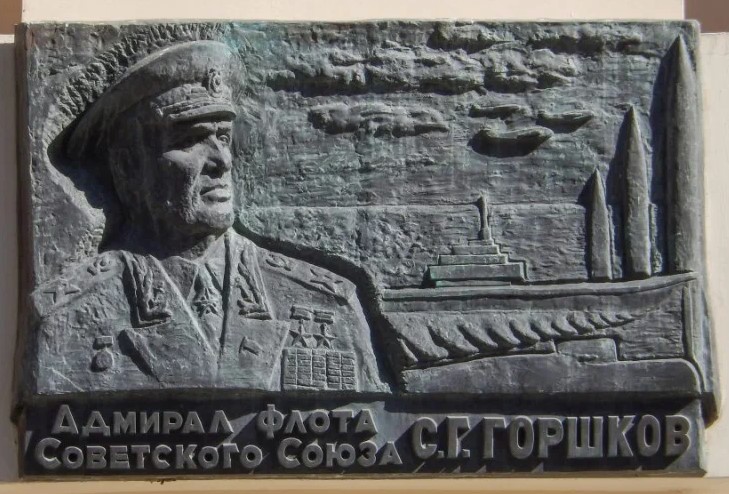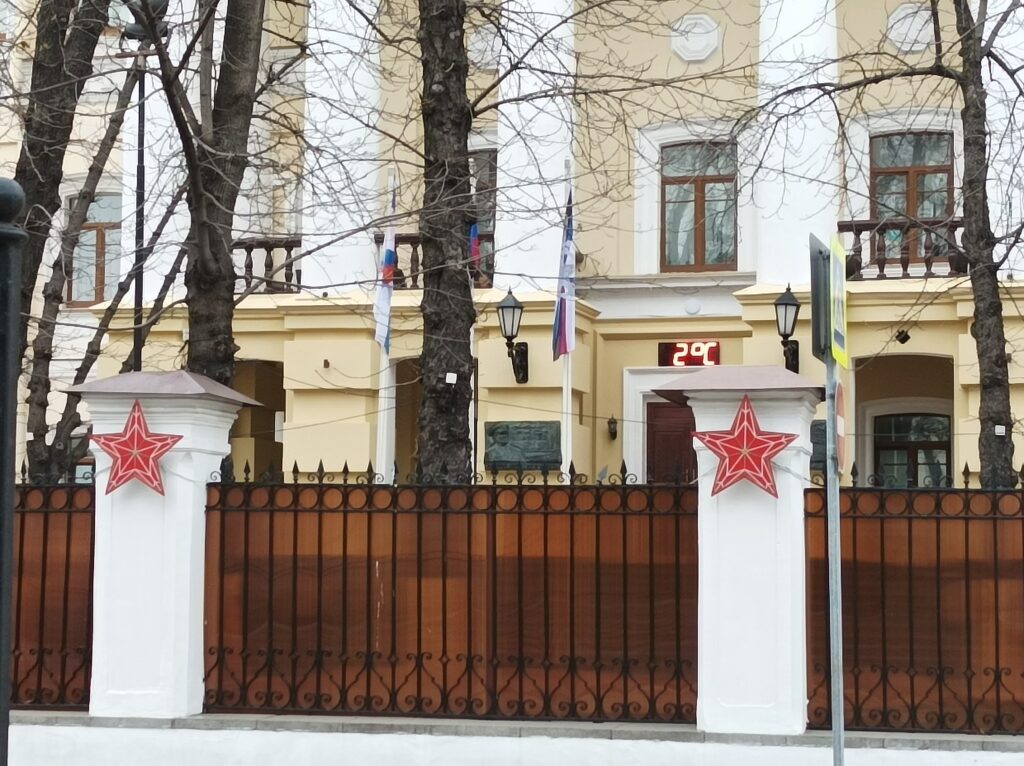Sergey Georgievich
Gorshkov
1910-1988

Sergey Georgievich Gorshkov was a Soviet military commander, naval commander and creator of the Russian nuclear missile fleet, Admiral of the Fleet of the Soviet Union. He was a Commander–in-Chief of the Navy – Deputy Minister of Defense of the USSR (1956-1985). Also he was a Hero of the Soviet Union twice (1965, 1982). He was born in the family of a teacher. In 1926 he graduated from a nine-year-old school in Kolomna, Moscow region. In the Navy since 1927. After graduating from the M.V. Frunze Naval School in 1931, he served in the Black Sea Fleet. He served in the Pacific Fleet since March 1932 as a navigator of the Tomsk minelayer, since January 1934 as a flagsturman of the barrage and trawling brigade, since November of the same year as a commander of the patrol ship Burun. In 1937, he graduated from the courses of destroyer commanders and was appointed commander of the destroyer Razyashchy. Since October 1937 he was a Chief of Staff, and since May 1938 he was a commander of the destroyer brigade. He participated in combat operations in the area of Lake Hassan in 1938 as commander of the 7th Naval Brigade of the Pacific Fleet. In June 1940, he was transferred to the Black Sea Fleet and appointed commander of the cruiser brigade. In 1941 he graduated from the KUVNAS at the Naval Academy. At the beginning of the Great Patriotic War, the ships of the brigade under the command of Sergei Georgievich Gorshkov actively participated in the fleet’s combat operations. In September 1941, during the defense of Odessa, he led the landing of the first amphibious assault in the Black Sea Fleet in the Grigoryevka area, which contributed to the successful counterattack of the troops of the Odessa defensive area. In September 1941, S.G. Gorshkov was awarded the rank of rear Admiral. From October 1941 he commanded the Azov Flotilla. During the Kerch-Feodosiya amphibious operation of 1941-1942. He led the landing forces on the northern shore of the Kerch Peninsula. In the summer of 1942, the flotilla under his command supported the troops of the Southern and North Caucasian Fronts. In August 1942, after the withdrawal of the troops of the Transcaucasian Front to Novorossiysk, 150 warships and vessels under the command of Gorshkov made a successful breakthrough from the Azov to the Black Sea. After the inclusion of the Azov military Flotilla in the forces of the Novorossiysk Defensive Area in November 1942, he was appointed deputy commander of the defensive area for the naval part and a member of the Military Council, took part in the leadership of the defense of the city. In November of the same year, he temporarily commanded the 47th Army, participating in the defense of the Caucasus. In February 1943, he was appointed commander of the newly formed Azov Military Flotilla. During the Kerch-Eltigen amphibious operation in 1943, S.G. Gorshkov personally supervised the preparation and landing of amphibious landings in the main direction. From April 1944 he commanded the Danube Flotilla. During the Iasi-Kishinev offensive operation, the flotilla successfully assisted the troops of the 3rd Ukrainian Front in forcing the Dniester Estuary, provided a breakthrough of the enemy’s defense. In September — November 1944, the flotilla assisted the troops of the 2nd and 3rd Ukrainian Fronts during the Belgrade and Budapest operations. In November 1944, Gorshkov was appointed commander of a squadron of the Black Sea Fleet. After the war, he remained in his former position. In September 1945, S.G. Gorshkov was awarded the rank of Vice Admiral. Since November 1948, Chief of Staff, since August 1951. – Commander of the Black Sea Fleet. In August 1953, he was awarded the rank of Admiral. In July 1955, he was appointed 1st Deputy Commander-in-Chief of the Navy. In January 1956, he was appointed Commander–in-Chief of the Navy – Deputy Minister of Defense of the USSR. In April 1962 S.G. Gorshkov was awarded the rank of Admiral of the Fleet. Under his leadership, the Navy became a nuclear missile, was replenished with ships and vessels of new types, including nuclear submarines and surface missile carriers, naval missile aircraft, helicopters for various purposes. Gorshkov’s great merit was the entry of the Soviet fleet into the ocean with the organization of long-term combat service of Navy ships in operationally important areas of the World Ocean and the formation of operational squadrons operating in the Mediterranean Sea, Atlantic, Pacific and Indian Oceans. He was a laureate of the Lenin Prize (1985) and the USSR State Prize (1980).
Address: Moscow, Bolshoy Kozlovsky lane, 6, p. 1

